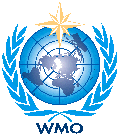9 February 2009: A new radiosonde will be developed under the Global Climate Observing System (GCOS) Reference Upper-air Network (GRUAN) to allow more accurate measurements of temperature and humidity trends in the atmosphere.
GRUAN is being developed by GCOS, which is sponsored by the World Meteorological Organization (WMO) jointly with the Intergovernmental Oceanographic Commission of […]

9 February 2009: A new radiosonde will be developed under the Global Climate Observing System (GCOS) Reference Upper-air Network (GRUAN) to allow more accurate measurements of temperature and humidity trends in the atmosphere. GRUAN is being developed by GCOS, which is sponsored by the World Meteorological Organization (WMO) jointly with the Intergovernmental Oceanographic Commission of the UN Educational, Scientific and Cultural Organization, the UN Environment Programme and the International Council for Science.
Upper-air observations within the GRUAN network will provide long-term, high-quality climate records, which will be used to constrain and validate data from space-based remote sensors, and will provide accurate data for the study of atmospheric processes. Radiosondes are critically important to measure climate. A radiosonde is a small, expendable measuring device for use on weather balloons that measures vertical profiles of key atmospheric parameters, such as air pressure, temperature and humidity. The new generation of radiosondes will be reference high-quality instruments for climate information. [WMO Press Release]